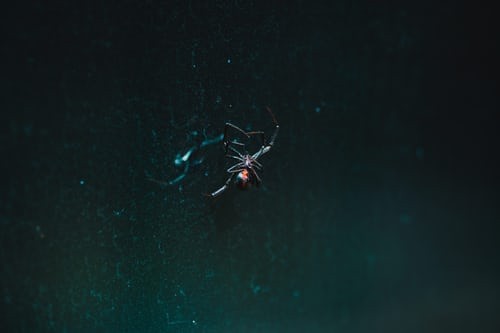
Spiders rarely bite people, and most species commonly found where humans are dwelling are the non-venomous kinds. Like other animals, spiders only 'bite' when surprised or threatened, which is understandable. However, these bites are harmless since spider fangs are too short to even break into the skin.
There are two spiders -- whose bites can certainly hurt -- that occur in the United States: the Black Widow, and the Brown Recluse. The former likes are staying in woodpiles, fences, and sometimes outhouses in the Southern and Western regions of the country while the latter prefers living in garages, attics, and piles of rocks in the Midwest or South. These two spiders are often solitary and will not bite unless provoked or get their territories invaded by accident.
Identifying these spiders is easy, and knowing them could possibly save a person from suffering the fate of being bitten. The Black Widow can be easily identified with its black appearance and plump body, long legs, and the distinct hourglass-shaped marking on its back. On the other hand, the Brown Recluse spider is light brown, sometimes dark depending on the species, with long legs and a distinct violin-like marking on the dorsal side of its cephalothorax (the area that connects the head and the thorax).
HOW DO I KNOW IF I WAS BITTEN BY A SPIDER?
Most often than not, spider bites are just similar to normal bug bites. However, when bitten by a Black Widow or a Brown Recluse, that might not be the case. In cases of bites from these two spiders, there will always be a sharp pain and swelling in the area that was bitten. The sharp pain will then be felt to the stomach, chest, and back while the victim suffers intense sweating.
Fever will eventually follow through, and the patient may experience chills and joint pains and nausea. The Brown Recluse spider is known to cause necrosis or the immediate rotting of the cells around the infected area. This phenomenon is quite common to all Brown Recluse spider species that the condition is known as loxoscelism.
WHAT SHOULD I DO WHEN I GOT BIT BY A SPIDER?
Usually, discoloration of the skin will be observed 12 hours after. But if a person suspects that he/she has been bitten by either the Black Widow or the Brown Recluse, the first step of first aid is to wash the bite wound with water and soap as quickly as possible. The next step is to elevate the infected area where the bite is and apply a cold compress to help with the pain and swelling.
In very cases, complications can arise due to getting bit by a spider. For instance, with Black Widow bites, complications can lead to kidney failure and seizures. With the Brown Recluse, complications include blood disorders and coma. But, to emphasize, these are very rare cases, and bites can be avoided if spiders are left in peace.
Of course, to avoid complications, the patient should be brought immediately to the doctor. There is no recommended antivenom yet for the spider bites, especially for the Brown Recluse spiders. With Black Widow spiders, antivenom is available, and with the help of muscle relaxants, it can be used as primary medications.
© 2026 ScienceTimes.com All rights reserved. Do not reproduce without permission. The window to the world of Science Times.











